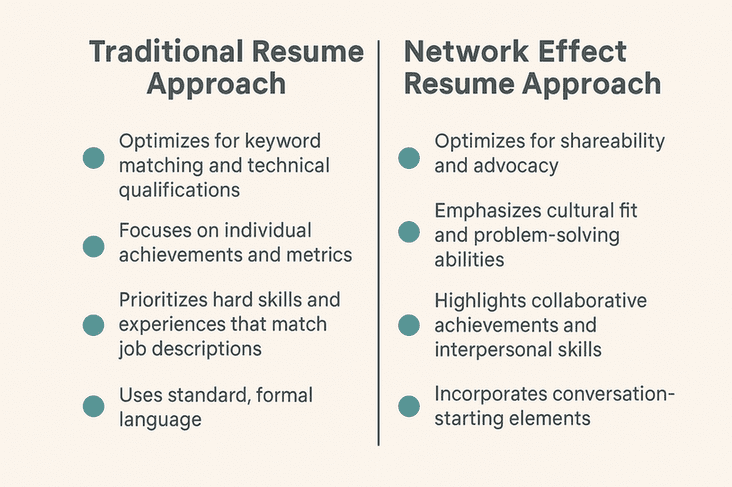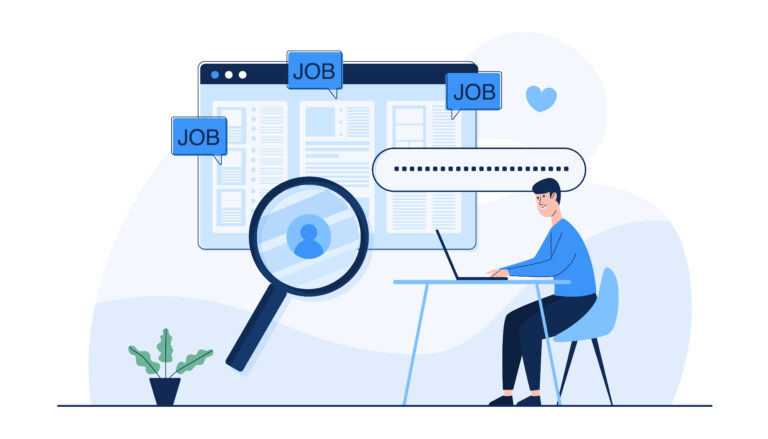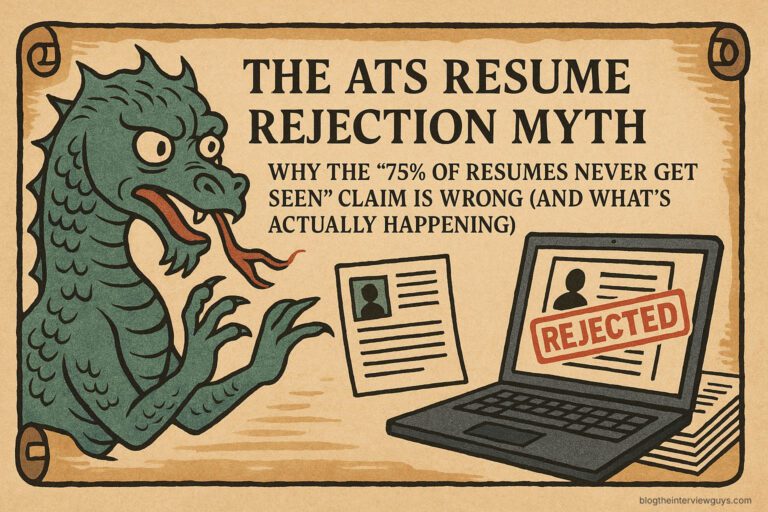The “Network Effect” Resume: How to Optimize Your Resume for Referrals, Not Just Applications
You’ve spent hours perfecting your resume. You’ve run it through ATS checkers, carefully chosen keywords, and formatted it precisely according to best practices. Yet after submitting dozens of applications, your inbox remains empty.
Sound familiar?
Here’s a reality check: according to data from Jobvite, only 2-3% of candidates who apply through job boards get an interview. Meanwhile, referred candidates are a staggering 15 times more likely to be hired than those who apply through job boards.
The hard truth? Your perfectly optimized resume isn’t failing—your strategy is. While most job seekers pour all their energy into pleasing faceless algorithms, the smart ones are crafting what we call the “Network Effect Resume” – a document specifically engineered to leverage the single most powerful force in hiring: human connections.
In this guide, we’ll show you how to transform your resume from an algorithmic submission into a powerful networking tool that makes it easy for your connections to advocate for you. We’ll reveal specific tactics to balance ATS requirements with network-friendly elements that dramatically increase your chances of landing interviews through referrals.
Stop competing with thousands of applicants for the scraps of the visible job market. It’s time to access the 70-80% of positions that are filled through connections – with a resume designed specifically for that purpose.
The Power of Referrals: By the Numbers
Before diving into optimization tactics, let’s establish why referrals matter so much:
- Referred candidates are 4-5 times more likely to get hired than non-referred candidates
- The average job posting receives 250+ applications, but only 2% get interviews
- 82% of employers rate employee referrals as generating the best ROI among all recruiting methods
- Referred employees have a 46% retention rate after one year, compared to 33% for candidates hired through job boards
- Hiring managers fill positions through referrals in 29 days on average, compared to 39-55 days through job boards
These statistics reveal the fundamental advantage of referrals: they provide a shortcut around the most competitive stages of the hiring process. With a referral, your resume skips the brutal initial screening phase where most candidates are eliminated.
According to a comprehensive study by Harvard Business Review, referred candidates are consistently higher quality than applicants from the general public and significantly more likely to receive offers, accept positions, and stay longer with the company.
But there’s a catch: the resume that works for algorithms isn’t necessarily the same one that works for referrals. To maximize your chances, you need to optimize differently.
Traditional Resume Optimization vs. Network Effect Optimization
We’ve previously covered how to optimize your resume for ATS systems and pass the 6-second resume test with recruiters. These approaches focus primarily on:
- Using the right keywords and formatting for machine readability
- Creating clear visual hierarchies for quick human scanning
- Quantifying achievements for immediate impact
- Eliminating common resume red flags that trigger rejection
These principles still matter for a Network Effect Resume, but the strategy shifts in important ways:
Traditional Resume Approach:
- Optimizes for keyword matching and technical qualifications
- Focuses on individual achievements and metrics
- Prioritizes hard skills and experiences that match job descriptions
- Uses standard, formal language
Network Effect Resume Approach:
- Optimizes for shareability and advocacy
- Emphasizes cultural fit and problem-solving abilities
- Highlights collaborative achievements and interpersonal skills
- Incorporates conversation-starting elements
- Makes it easy for your contact to “sell” you internally
The key difference? A Network Effect Resume isn’t just read—it’s shared and discussed. It needs to facilitate conversations about you, not just document your experience.

Key Principles of the Network Effect Resume
1. Shareability
Your resume must be easy for connections to forward to decision-makers. This means:
- Clean, professional formatting that translates well across devices and email systems
- Clear, compelling value proposition visible within seconds
- Reasonable length (1-2 pages maximum) that respects busy professionals’ time
- Self-contained information that doesn’t require additional explanation
As our cold connection to referral guide explains, making it easy for someone to help you is critical to getting that help.
2. Conversation-Starting Content
Traditional resumes are designed to answer questions. Network Effect Resumes are designed to spark them.
Include elements that prompt natural discussion:
- Unique projects that invite questions about process or outcomes
- Interesting career transitions that tell a compelling story
- Specific problem-solving approaches that differentiate you
- Accomplishments relevant to current challenges at the target company
3. Relationship-Focused Achievements
Referrals matter because they reduce risk—the risk of hiring someone who won’t work well with others. Emphasize achievements that showcase your ability to:
- Collaborate across departments and hierarchies
- Navigate complex organizational dynamics
- Build consensus and drive initiatives forward
- Contribute to positive workplace culture
4. Clear Problem-Solution Frameworks
Make it easy for your advocates to explain how you’ll add value by structuring accomplishments in clear problem-solution formats:
- Challenge you faced
- Action you took
- Result you achieved
- Application to their company’s needs
5. Cultural Alignment Indicators
Subtle demonstrations of cultural fit help your connection advocate for you as “one of us”:
- Values that align with the company’s mission
- Communication style that matches organizational norms
- Experiences that reflect the company’s priorities
- Industry insights that show you “get it”
Tactical Resume Adjustments for Referrals
Now let’s transform these principles into specific resume modifications:
The Conversation-Starting Summary
Replace the standard professional summary with one that facilitates advocacy:
Traditional Summary: “Results-driven marketing professional with 7+ years of experience in digital campaign management, lead generation, and conversion optimization. Proven track record of exceeding KPIs and implementing data-driven strategies.”
Network Effect Summary: “Marketing strategist who turned a failing fintech product launch into the company’s most successful campaign by designing an innovative customer journey that addressed the exact pain points your team is currently facing in the healthcare vertical. Known for building collaborative cross-functional relationships that turn marketing initiatives into company-wide wins.”
Interview Guys Tip: Notice how the Network Effect summary creates natural conversation points while demonstrating specific value to the company? It gives your referrer a clear “pitch” they can use when sharing your resume.
The Connection-Context Section
Consider adding a subtle “Relevant Experience” or “Project Focus” section that aligns your background with the specific team or challenge:
“Project Focus: Healthcare Payment Systems Led cross-functional team of developers, compliance officers, and UX designers to launch HIPAA-compliant payment processing system that reduced transaction friction by 64% while maintaining full regulatory compliance.”
This approach helps your referrer show precisely how your experience connects to current needs without explicitly mentioning the referral.
Problem-Solution Formatting
Restructure your bullet points to highlight problems solved rather than tasks completed:
Traditional Format: “Managed social media advertising budget of $1.2M and implemented new targeting strategy.”
Network Effect Format: “Solved declining conversion problem by redesigning social media targeting strategy, reducing cost-per-acquisition by 42% while managing $1.2M quarterly budget.”
Interview Guys Tip: When writing problem-solution bullets, research the specific challenges facing your target company right now. LinkedIn posts, recent press releases, and company blog posts can reveal pain points you can address in your resume.
The Collaborative Emphasis
Subtly demonstrate team orientation without diminishing your contributions:
Traditional Approach: “Developed new customer onboarding process that increased retention by 27%.”
Network Effect Approach: “Partnered with customer success and product teams to develop new onboarding process, contributing market research and journey mapping expertise that helped increase overall retention by 27%.”
This subtly signals that you’re both a contributor and a team player who builds positive working relationships.
A recent study published in the Journal of Marketing Research found that collaborative framing in professional communications significantly increases the likelihood of positive responses. Researchers found that highlighting collaborative achievements activates beneficial “reputational benefits” that make others more likely to advocate for you.
How AI Skills Enhance Your Referral Resume
The rise of essential AI skills in the workplace has changed how resumes are both created and evaluated. Leverage this trend by:
- Using AI tools for company-specific research
AI can quickly analyze a company’s website, social media, and press releases to identify linguistic patterns, cultural values, and current priorities—information you can subtly incorporate. - Creating tailored versions efficiently
AI assistants can help you quickly customize your Network Effect Resume for different connections and companies without starting from scratch each time. - Highlighting your own AI literacy
As more companies adopt AI tools, demonstrating your ability to work effectively with these technologies becomes a differentiator. - Maintaining authenticity
While AI can help optimize your resume, ensure the final document sounds like you. Your referrer needs to advocate for the real person they know or have connected with.
Interview Guys Tip: When using AI tools to help craft your resume, always have a human connection review it for authenticity. The subtle differences between AI-generated content and authentic human communication can be detected by hiring managers.
Creating Referral-Optimized Content Blocks
A modular approach to your resume makes customization for different referral opportunities much easier. Create targeted content blocks that can be mixed and matched based on the specific referral context:
1. The Close Connection Block
When your referrer knows you well and can personally vouch for your work:
- Emphasize projects they’ve witnessed
- Include collaborative achievements you shared
- Highlight skills they’ve personally observed
- Reference mutual professional contacts
2. The Loose Network Block
When your connection is more distant but willing to refer you:
- Focus on easily verifiable accomplishments
- Include recognizable brands or projects
- Emphasize industry-standard certifications and skills
- Use more traditional metrics and outcomes
3. The Industry Insider Block
When your connection works in your field but not necessarily your exact role:
- Highlight broad industry knowledge and trends
- Demonstrate understanding of industry-specific challenges
- Use recognized terminology and frameworks
- Show progression within the industry
4. The Cross-Industry Referral Block
When your connection works at your target company but in a different function:
- Emphasize transferable skills and universal business impacts
- Highlight cross-functional collaboration examples
- Focus on business outcomes rather than technical details
- Demonstrate adaptability and learning agility
Interview Guys Tip: Maintain a content library of these blocks in a separate document, making it easy to quickly customize your resume for different referral opportunities without missing key elements.
The Visual Impact Strategy for Referred Resumes
The visual presentation of a Network Effect Resume requires a careful balance—it must be both ATS-compatible and visually distinctive when shared via email or printed:
1. Strategic Use of White Space
Create clear visual sections that make it easy for the reader to navigate your experience:
- Generous margins (minimum 0.75″)
- Distinct separation between sections
- Sufficient line spacing within sections
- No dense text blocks
2. Subtle Brand Elements
Consider tasteful design elements that make your resume memorable without being flashy:
- A simple, professional color accent
- A clean, minimal header design
- Consistent typography throughout
- Quality paper if printed (for in-person networking)
3. Scannable Structure
Busy executives often review shared resumes in under 10 seconds:
- Bold key achievements and metrics
- Use subheadings to guide the eye
- Keep paragraphs short (3-4 lines maximum)
- Ensure digital readability on mobile devices
4. The Digital Advantage
Remember that referred resumes are often shared digitally:
- Ensure all fonts embed properly in PDFs
- Test how your resume appears when forwarded via email
- Check compatibility across devices and platforms
- Consider a simplified ATS version and a more designed referral version
Interview Guys Tip: Name your resume file thoughtfully (e.g., “John-Smith-Product-Marketing-Resume.pdf”) to maintain professionalism when your contact forwards it to others.
Implementation Guide: Building Your Network Effect Resume
Follow this step-by-step process to transform your existing resume:
Step 1: Research and Preparation
- Identify your most likely referral connections
- Research target companies and their specific needs
- Collect language, terminology, and cultural cues from company materials
- List specific problems or challenges the company is facing
Step 2: Foundation Building
- Start with your ATS-optimized resume as the base
- Preserve essential keywords and formatting for algorithm compatibility
- Remove unnecessary jargon or overly technical language
- Ensure basic structure works for both human and machine readers
Step 3: Content Transformation
- Rewrite your professional summary using the conversation-starter approach
- Convert achievement bullets to problem-solution format
- Add collaborative language to appropriate accomplishments
- Create custom content blocks for different referral scenarios
Step 4: Visual Refinement
- Ensure clean, professional formatting
- Optimize for digital sharing and forwarding
- Create appropriate white space for readability
- Test print quality if appropriate for your industry
Step 5: Testing and Feedback
- Ask connections to review for advocacy potential
- Conduct a 10-second scan test with fresh eyes
- Get feedback on what stands out first
- Verify that the core message is clear without explanation
Beyond the Resume: Complementary Network Effect Strategies
Your resume doesn’t exist in isolation. Support it with these complementary strategies:
1. LinkedIn Profile Alignment
Ensure your LinkedIn profile reinforces and expands on your resume:
- Use more conversational language than your resume
- Include recommendations that highlight collaborative skills
- Share content that demonstrates thought leadership
- Engage with your target company’s content
According to the American Psychological Association’s research on LinkedIn optimization, professionals should “use the platform as an additional marketing tool that tells your story beyond what’s on your resume.” The research emphasizes that your network choices, content engagement, and profile elements should all be strategically aligned with your target audience for maximum impact.
2. Supporting Materials
Consider creating additional materials your connection can share if appropriate:
- A brief “one-pager” highlighting specific relevant experience
- Project case studies that showcase your approach
- Work samples (where confidentiality allows)
- Testimonials or recommendations specific to relevant skills
3. Follow-Up Strategy
Provide your referrer with an easy follow-up plan:
- Draft a simple email they can forward with your resume
- Prepare talking points they can use in internal discussions
- Make yourself available for questions from their colleagues
- Express gratitude regardless of outcome
Conclusion: The Dual-Purpose Resume Strategy
The most effective job seekers don’t choose between ATS optimization and network optimization—they build resumes that work for both pathways.
Remember:
- The job market is not a meritocracy; it’s a network-driven ecosystem
- Your resume is not just a document; it’s a conversation starter
- Referrals aren’t just shortcuts; they’re how the majority of positions are actually filled
- Optimization isn’t just technical; it’s about facilitating human connections
By applying the Network Effect Resume principles, you transform your resume from a passive document into an active tool that leverages the most powerful force in hiring: human advocacy.
Start by making one key section of your resume more “network-friendly” today, then gradually transform the entire document. Your next opportunity is likely one connection—and one optimized resume—away.

BY THE INTERVIEW GUYS (JEFF GILLIS & MIKE SIMPSON)
Mike Simpson: The authoritative voice on job interviews and careers, providing practical advice to job seekers around the world for over 12 years.
Jeff Gillis: The technical expert behind The Interview Guys, developing innovative tools and conducting deep research on hiring trends and the job market as a whole.





